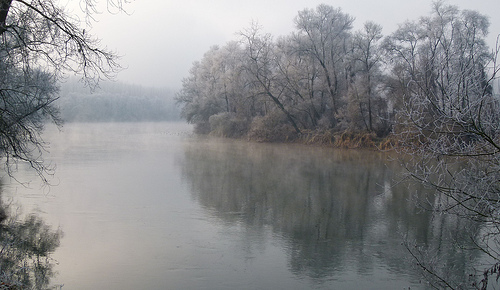In un nuovo studio pubblicato di recente sulla rivista Science of the Total Environment un gruppo di ricercatori (fra questi R. Vezzoli, P. Mercogliano e A. L. Zollo della Divisione REMHI del CMCC) ha indagato gli impatti dei cambiamenti climatici sulla portata del bacino del fiume Po. Sono state utilizzate proiezioni climatiche e idrologiche continue fino al 2100, prendendo in considerazioni gli scenari RCP4.5 e RCP8.5 dell’ultimo rapporto di valutazione dell’IPCC; le proiezioni climatiche sono state ottenute dall’uso combinato del modello climatico regionale COSMO-CLM e del modello climatico globale CMCC-CM.
I risultati mostrano come le temperature siano destinate a salire in tutta l’area esaminata, per entrambi gli scenari RCP e in tutte le stagioni dell’anno; le più significative variazioni si osservano in estate, dove a una riduzione nella frequenza e nell’entità delle precipitazioni si associa una conseguente riduzione della portata del fiume, e in inverno e autunno, dove si assiste al fenomeno opposto.
L’abstract dell’articolo:
The impacts of climate change on Po River discharges are investigated through a set of climate, hydrological, water-balance simulations continuous in space and time. Precipitation and 2 m mean temperature fields from climate projections under two different representative concentration pathways, RCP4.5 and RCP8.5, have been used to drive the hydrological model. Climate projections are obtained nesting the regional climate model COSMO-CLM into the global climate model CMCC-CM. The bias in climate projections is corrected applying the distribution derived quantile mapping. The persistence of climate signal in precipitation and temperature after the bias correction is assessed in terms of climate anomaly for 2041–2070 and 2071–2100 periods versus 1982–2011. To account for the overall uncertainty of emission scenarios, climate models and bias correction, the hydrological/water balance simulations are carried out using both raw and bias corrected climate datasets. Results show that under both RCPs, either considering raw and bias corrected climate datasets, temperature is expected to increase on the whole Po River basin and in all the seasons; the most significant changes in precipitation and discharges occur in summer, when the reduction of precipitation leads to an increase in low flow duration and occurrence likelihood, and in autumn and winter where precipitation shows a positive variation increasing the high flows frequency.
Leggi la versione integrale dell’articolo:
Vezzoli R., Mercogliano P., Pecora S., Zollo A. L. , Cacciamani C.
Hydrological simulation of Po River (North Italy) discharge under climate change scenarios using the RCM COSMO-CLM
2015, Science of The Total Environment, vol.521-522, pp 346-358, DOI: 10.1016/j.scitotenv.2015.03.096




